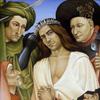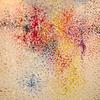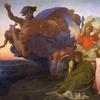Paul Gauguin’s Artistic Innovations Will Be Installed in a Tropical Setting Reflecting Their Inspiration
- SARASOTA, Florida
- /
- January 21, 2019
This winter, Marie Selby Botanical Gardens in Sarasota, Florida, will offer a rare opportunity to experience a selection of captivating images by Post-Impressionist legend Paul Gauguin (1848-1903), alongside lush horticultural displays of some of the rare plants that inspired him. Gauguin: Voyage to Paradise will explore the botanical world that the artist encountered during his life and travels in the late 19th century by presenting dramatic woodcuts and other seldom seen works that Gauguin created on his journeys to French Polynesia, Brittany and Martinique.
The exhibition is curated by Carol Ockman, Ph.D., curator at large for Selby Gardens and the Robert Sterling Clark professor of art history at Williams College. It will be on view exclusively at Selby Gardens from Feb. 10 through June 30, 2019.
Gauguin: Voyage to Paradise is the third installment of the ongoing, popular Jean and Alfred Goldstein Exhibition Series at Selby Gardens, which explores the rich connections between nature and the arts.
“As part of its commitment to research and education, Selby Gardens is pleased to have organized this insightful opportunity to consider the work of Paul Gauguin through the plants and natural environments he embraced and represented so exuberantly,” said Jennifer O. Rominiecki, CEO and president of Marie Selby Botanical Gardens.
Gauguin traveled extensively throughout his life, from rural France to the Caribbean and the Americas and ultimately the islands of French Polynesia. Through its inventive point of entry to Gauguin’s life and work, Gauguin: Voyage to Paradise returns the artist’s visions of a utopian paradise to the natural context in which they were created.
Living displays throughout the gardens and in the glass house conservatory will showcase rare and spectacular plants from the regions that influenced Gauguin’s worldwide travels and figure prominently in his repertoire. Among the plants from Selby Gardens’ collection to be featured will be banana and coconut trees, as well as a variety of palms, taro and breadfruit.
Self-taught, Gauguin did not adhere to traditional artistic hierarchies, and his rejection of urban industrialization further informed his original artistic style. As can be seen in Gauguin: Voyage to Paradise through the works on loan from the Israel Museum, Jerusalem, and Smith College Museum of Art the artist blended fine art and craft, as well as merged Western artistic traditions with the folklore of South Pacific cultures.
The exhibition will also examine the idealized myths behind Gauguin’s romantic quest for a land that time forgot and identification as a self-styled “savage,” and will reveal the artist’s own disillusionment upon reaching each “exotic” destination.
Performances in partnership with Perlman Music Program/Suncoast, Asolo Repertory Theatre, Sarasota Ballet, Sarasota Opera and Sarasota Orchestra have been planned in conjunction with the exhibition. In addition, family-themed events will be held monthly, along with after-hours celebrations, lectures and classes in painting, photography and horticultural display. A full schedule of events is online at www.selby.org.













